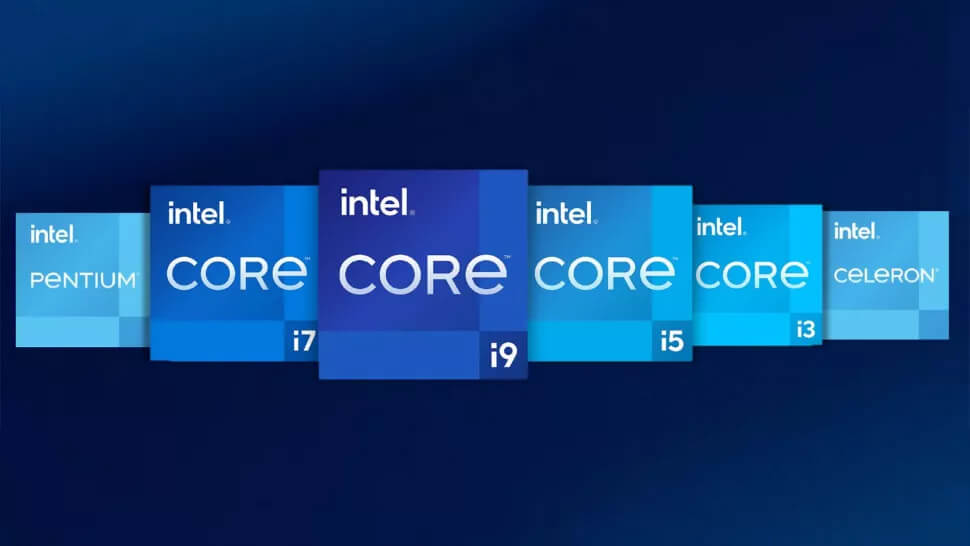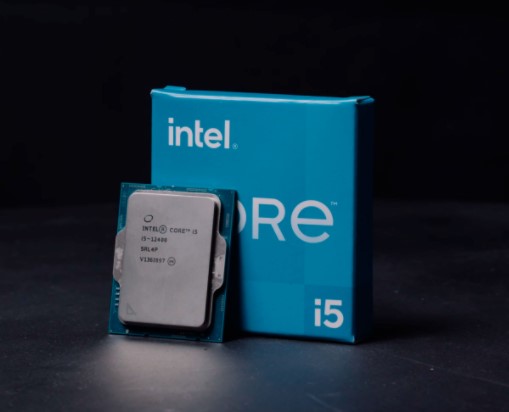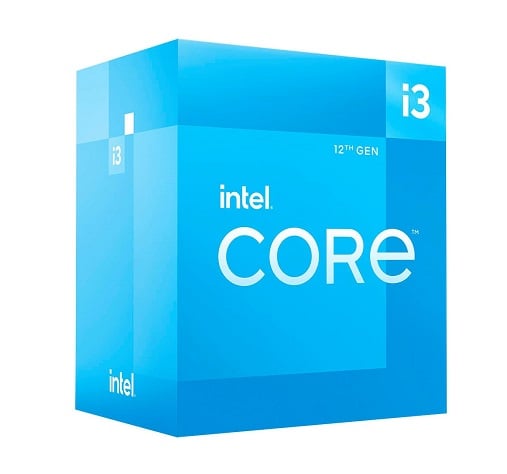When a new generation of processors is released, there’s an understandable focus on the top end. The boundary pushers and record breakers. The chips that are going to change what our perspective of cutting-edge performance looks like.
That was the case with Intel’s 12th-generation Alder Lake CPUs too. They not only raised the bar for performance in gaming and productivity, but changed our idea of what high-end CPUs could be, with its combination of performance and efficiency cores proving surprisingly effective in a desktop setting.
But as exciting as the Core i9-12900K is, and how much we’re awaiting the upcoming 12900KS with its even more ludicrous clock speed, performance potential, and power draw, those top-tier chips aren’t what makes Intel’s 12th generation CPUs so exciting. Not really.
What really makes Alder Lake an exciting generation of processors, is what it’s meant for the mid-range and entry-level chips.
Those are the ones the majority of gamers and workers will buy in their pre-built and DIY custom designs, and it’s there where the most exciting performance, efficiency, and value enhancements can be found.
Intel Alder Lake Entry-Level Specifications

Intel’s range of Alder Lake processors is extensive, with K, and non-K variants of its 12th-generation chips combined totalling almost 20.
The high-end CPUs came first, with Intel launching its Alder Lake line with the Core i9-12900K, the Core i7-12700K, and the Core i5-12600K. Each of them sports high clock speeds and a combination of performance and efficiency cores that offer staggering performance in both gaming and work-related tasks.
Since then Intel has expanded the 12th-generation with a range of other processors, adding non-K versions of its top-tier CPUs, right down to entry-level Pentiums.
But for custom gaming PC builders like Chillblast, and the wider enthusiast community, there are a handful of intriguing CPUs in the Core i5 and Core i3 range that hold the most potential to be fantastic options for those building affordable, and mid-range gaming PCs.
| Core i5-12600K | Core i5-12600 | Core i5-12400 | Core i5-12400F | Core i3-12100 | Core i3-12100F | |
| Cores | 10 (6P+4E) | 6 | 6 | 6 | 4 | 4 |
| Threads | 16 | 12 | 12 | 12 | 8 | 8 |
| Clock Speed | 3.7GHz | 3.3GHz | 2.5GHz | 2.5GHz | 3.3GHz | 3.3GHz |
| Boost Speed | 4.9GHz | 4.8GHz | 4.4GHz | 4.4GHz | 4.3GHz | 4.3GHz |
| Graphics | UHD 770 | UHD 770 | UHD 730 | N/A | UHD 710 | N/A |
| Base Power | 125W | 65W | 65W | 65W | 60W | 58W |
| Boost Power | 150W | 117W | 117W | 117W | 89W | 89W |
The Core i5-12600K in the above table is there for comparison purposes and shows what changes once you drop that K-suffix.
Real World Performance
Intel Core i5-12600

The Core i5-12600 has the same six performance cores as the 12600K, but it loses the efficiency cores altogether. It does, however, maintain a high 4.8GHz boost clock speed, at a much lower power requirement.
That makes it quite an exciting chip. Though it doesn’t have the flagship feature of the higher-end Alder Lake processors – the efficiency cores – it has the same powerful 10nm Golden Cove performance cores and a near 5GHz boost clock which delivers excellent performance.
In early testing, this CPU was only a few percent slower than the 12600K in single-threaded tasks. And only around 20 percent slower in multithreaded tasks.
While that might make the 12600K a superior chip for productivity tasks like photo and video editing, or video transcoding, when it comes to games, there’s almost no difference at all. Even at 1080p, where a more powerful processor can lead to a notable difference in frame rates, the Core i5 12600 keeps almost level with the 12600K. It only falls behind by a couple of percentage points in specific games.
In the future, where games begin to support a greater number of cores and can take advantage of more threads, it may be that the 12600K begins to extend its lead.
It is also likely to be notably superior if you run lots of background tasks. Or if you’re trying to stream and game at the same time, as those efficiency cores can get to work and leave the main performance cores to handle the game.
Overclocking with Alder Lake
The Core i5 12600K does allow overclocking. So, for those who want to push it there is always the potential for greater performance in the here and now, too. Chillblast can do that for you too, so be sure to ask if you’re buying an Intel Alder Lake PC to find out what kind of extra performance we can get you.
But even if the Core i5-12600 doesn’t allow overclocking, that means there’s little reason to buy the more expensive Z690 Intel motherboards with overclocking enabled. You can opt for a more affordable board instead, saving further money on your gaming PC without sacrificing much in the way of real-world performance.
Core i5-12400 and 12400F

Although there is a Core i5-12500 chip, that’s more likely to be reserved for OEM system builds from major manufacturers.
For custom gaming PC manufacturers like Chillblast, and anyone looking to perform a DIY build, the next and arguably most exciting Alder Lake processors of the entire range are the Core i5-12400 and 12400F.
These processors take the already excellent Core i5-12600 and shave down the boost clock and power requirements for a big drop in price.
The 12400 features the same six cores and 12 threads as the 12600. Plus features the same amount of cache and support for up to DDR5-4800 memory, but maxes out at 4.4GHz when boosted. Although the base clock is significantly lower too, that’s not too much of a concern as long as you can keep the chip cool. Which should be simple, considering its very-modest 65W-117W power requirements.
These features put the Core i5-12400 and 12400F in the same efficiency range as the AMD Ryzen 5600X, which is an apt comparison because, in terms of raw performance, they are hotly competitive.
The AMD CPU is the more powerful chip and tends to offer anywhere up to 10 percent higher frame rates when paired with a decent graphics card. But it’s much more expensive than the 12400, and almost double that of the 12400F.
Great for small form factor builds
You do have to factor the higher cost of Intel 600-series motherboards in your budget when buying a 12th-generation system, but the Core i5-12400 and 12400F are incredibly competitive for the money.
Indeed, considering the 12400F is the cheaper of the two, if you’re buying a gaming PC with a dedicated graphics card, it’s by far the best option. You don’t need onboard graphics if you have a separate GPU. And at this sort of money, even a few pounds can be a big saving when it comes to putting together a new PC.
Either chip is great though, especially if you’re looking to build a small-form-factor or energy-efficient gaming PC.
While efficiency isn’t a hallmark of the Intel 12th-generation, the non-K CPUs that ditch the somewhat-ironically-named efficiency cores, and lower the clock speeds, show much more modest power and thermal demands, making them much better suited to more compact PCs.
Core i3-12100 and 12100F

The two babies of this generation of processors are the Core i3-12100 and 12100F.
They’re still the bigger brothers of the Pentium Gold and Celeron CPUs below them on the product stack, but those CPUs aren’t really designed for performance tasks. They lack the ability to boost at all and have a very limited number of cores.
In comparison, the Core i5-12100 and 12100F are excellent processors for extreme budget builds and entry-level gaming.
They each come with just four of the same performance cores you find in the more higher-powered Alder Lake CPUs, with all of the same improved single core performance of this generation. With hyperthreading extending their thread support to eight, that makes them clock-for-clock just as fast as much heftier processors from previous generations.
They both feature a base clock of 3.3GHz and a boost clock of 4.3GHz. That’s far from the 5GHz+ frequencies we see at the top end of the performance spectrum, but it’s nothing to sniff at either.
In most games, the Core i3-12100 and 12100F can keep pace with the last-generation Core i5-11400F. And, on average, are only around 15 percent slower than an AMD Ryzen 5600X – a CPU that can cost more than double what these budget 12th-gen CPUs do.
To give you some real context to just how far Intel has come with this generation of processors, the Core i3-12100F nips at the heels of the Core i9-9900K.
Just over three and a half years ago, that processor was the fastest gaming CPU on the planet. And had a price tag to match its achievements. But now here we are, with one of the most affordable processors of the current generation giving it a run for its money.
Best for an affordable gaming machine

While this doesn’t make the Core i3-12100 and 12100F great CPUs to upgrade to if you already have a reasonable gaming PC from any recent generation, it does make them an excellent entry-level point for your first gaming PC. Or if you’re looking to build an affordable second PC for a partner or child.
Pair either of these budget processors with a reasonable graphics card, and you’ll have a gaming PC that can easily handle high frame rates at 1080p, all for a very low price, and a very modest power draw too.
The one real negative of these kinds of ultra-budget processors, is that they are not great workhorses.
While the strong single core performance and support for eight threads might give the 12100 and 12100F solid gaming performance, their lack of physical cores means they just aren’t that great at intensive tasks like video editing or transcoding.
In tasks that favour single-threaded performance, like photo editing in Adobe Photoshop, they should keep pace with their more capable contemporaries. But, when multi-threaded performance is king, the Core i3-12100 and 12100F will fall behind.
Still, they sip power compared to the rest of the generation. Not even eclipsing a 90W power draw when running flat out.
If you want a very modest, affordable, quiet, and efficient gaming PC, a Core i3-12100F with an entry-level AMD or Nvidia GPU will give you a great 1080p gaming experience and will be easy to cool and keep quiet while you do it.
The Best Entry Level Alder Lake Processors
Intel’s 12th-generation Alder Lake processors have been a surprise return to form for team blue, with massive high-end performance from the Core i9-12900K, and impressively capable power in the mid-range with the Core i5-12600K.
These CPUs will continue to be the poster-children of their generation. Enjoying the praise for the usefulness of the efficiency cores, and for pushing performance boundaries with the performance cores.
But since most gamers don’t build absolute cutting edge gaming PCs and instead have to find the best value for money in more modest hardware, the rest of the Intel Core i5 and Core i3 processors in this generation are just as, if not more, exciting.
The Core i5-12600 represents a fantastically affordable and capable gaming processor that shows the real stars of this generation aren’t the efficiency cores, but Intel’s 10nm Golden Cove performance cores. It is often within just a few frames of the Core i5-12600K in gaming, and though it isn’t the production powerhouse of its higher-core-count siblings, it still outperforms many older Intel CPUs. And it does so at much greater efficiency too.
Affordable and Powerful
The Core i5-12400F is the real star of its generation, though.
It gives the AMD Ryzen 5600X a real run for its money – a stellar achievement considering that chip has been one of the most popular gaming CPUs of its generation for over a year. The 12400F costs a fraction of that AMD processor too, and stomps all over some of Intel’s previous-generation flagship CPUs, with way less power draw and a much lighter hit to your wallet.
The Core i3 12100 and 12100F might not be quite as powerful, but they’re still impressive in their own way.
They offer greater performance than most of AMD and Intel’s previous generation CPUs, making them worthy considerations for building a modern, budget gaming machine. They’re probably not worth recommending if you want to work and play on that PC, but for an efficient and very affordable entry-level PC, you’re not going to find anything better this generation.






